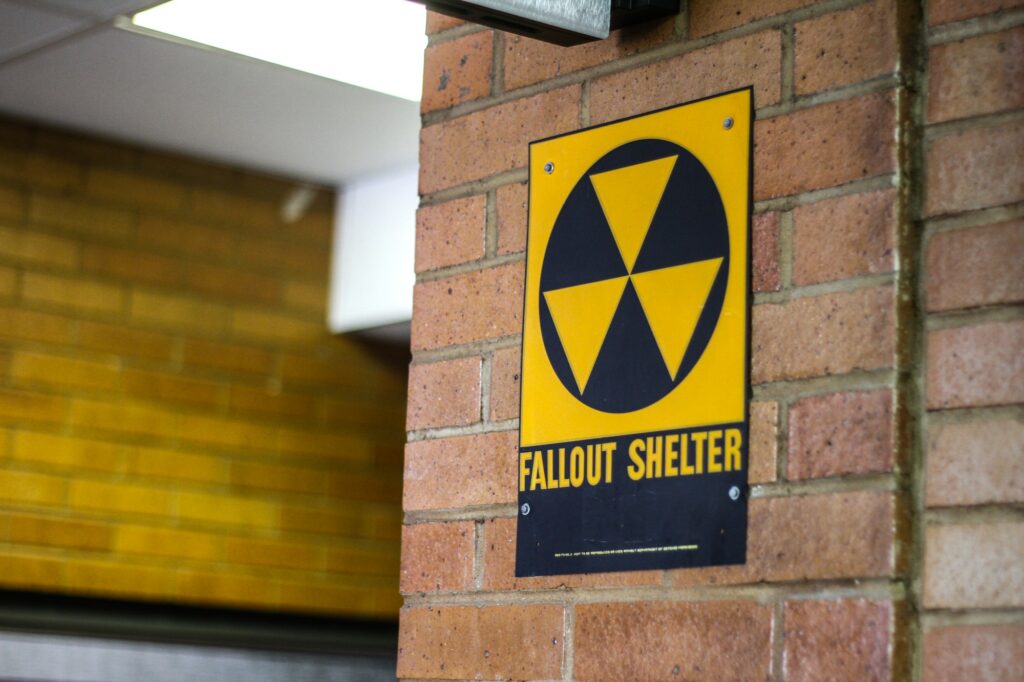To anyone who has seen a propaganda film from the 1960s, the iconic fallout shelter design is probably familiar. What may not be as familiar, however, is that its late creator was Ogden native and Weber State University alumnus Robert Blakeley, who passed away at the age of 95 on October 25, 2017.

As a response to the growing threat of nuclear attack from Russia, President John F. Kennedy commissioned a network of fallout shelters intended to protect those inside from nuclear blasts. These shelters were stocked with food and water and labeled with Blakeley’s symbol.
Though Blakeley is credited with the symbol’s design, he did not have experience in graphic design. His experience in the Marine Corps during World War II and the Korean War influenced his work on the symbol.
He dismissed a suggestion that it be made from railroad board, which he said would easily go up in flames in a nuclear blast.
“Whatever we developed, it would have to be usable in Manhattan when all the lights are out and people are on the street and don’t know where to go,” Blakeley said.
According to Blakeley’s family, he wasn’t the kind of man to boast about his accomplishments, nor was the fallout shelter design his proudest.
Jean Harding, Blakeley’s niece, works with WSU’s Counseling and Psychological Services Center. Harding said that if Blakeley wanted to be known for anything, it was his time spent as president of Toastmasters International.
“He gave a presentation when he was in the Army Corps of Engineers, and I guess he didn’t do the greatest job on it,” Harding said. “Somebody came up to him afterward and said, ‘You ought to join this organization. They could do a lot of good for you.’”
From there, Harding said that Blakeley rose through the ranks until he became president.
According to Harding, women were not in full membership at the time of Blakeley’s joining. As president, however, Harding said he pushed to make sure they were allowed into the organization.
Because of Blakeley’s tendency to keep quiet about his achievements, Harding said she didn’t learn this until after he passed away.
Blakeley’s own account resembles Harding’s in his dismissal of his personal achievements. While walking down the street, his young children would often point out his signs.
“Other than that, it’s just like many of the other things that happen in life,” Blakeley said. “It’s just one of those routine things. I don’t know if I’ve ever had an occasion to tell anybody that I was involved in it because I don’t think it’s ever been high on my priorities.”
On top of being president of Toastmasters International, Blakeley fought in two of the Marine Corps’s bloodiest battles: Iwo Jima during World War II and Chosin Reservoir during the Korean War.
Charmalee Earl, another niece of Blakeley’s, reflected on his service in the military.
“I have a daughter-in-law whose grandfather was one of the Chosin Few, and it changed him. It changed him a lot,” Earl said. “When I realized Uncle Bob was a part of that, I thought, ‘Wow, he was such a mild-mannered, friendly, warm, delightful person, and to have been through two such horrible battles and not have it affect him and be a bitter, angry soul just amazes me.’”













